Amer Fort – History, Timings
About:
Amer Fort serves as an exemplary representation of Rajput architectural style, showcasing elements influenced by Mughal design
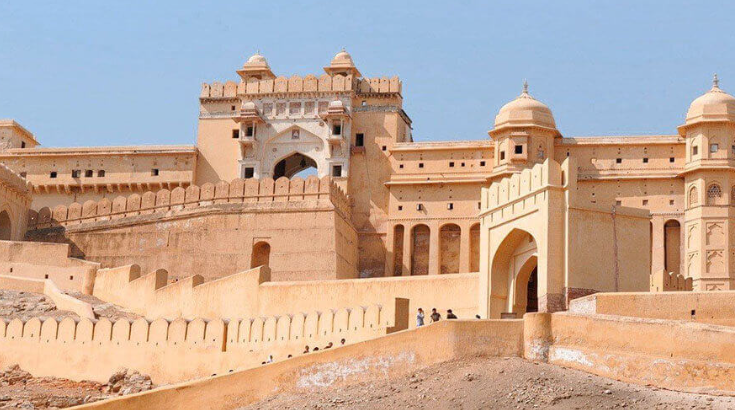
Amer Fort serves as an exemplary representation of Rajput architectural style, showcasing elements influenced by Mughal design. Constructed from red sandstone and marble, this magnificent and luxurious palace is organized into four distinct levels, each featuring a courtyard. The complex includes the Diwan-e-Aam, known as the “Hall of Public Audience,” the Diwan-e-Khas, or “Hall of Private Audience,” the Sheesh Mahal (Mirror Palace) also referred to as Jai Mandir, and the Sukh Niwas, where a cool atmosphere is artificially maintained by winds that flow over a water cascade within the palace. Consequently, the Amer Fort is frequently referred to as the Amer Palace. This palace served as the residence for the Rajput Maharajas and their families. At the entrance near the Ganesh Gate of the fort, there is a temple dedicated to Shila Devi, a deity of the Chaitanya cult, which was presented to Raja Man Singh following his victory over the Raja of Jessore, Bengal, in 1604. (Jessore is currently located in Bangladesh). Raja Man Singh had twelve queens, leading him to construct twelve rooms, one for each queen, with staircases connecting to the king’s chamber, although the queens were not permitted to ascend. In contrast, Raja Jai Singh, who had only one queen, built a single room equivalent in size to three of the previous queens’ chambers.
This palace, situated alongside Jaigarh Fort, is positioned directly above on the Cheel ka Teela (Hill of Eagles) within the same Aravalli mountain range. The palace and Jaigarh Fort are regarded as a single entity, as they are linked by an underground passage. This passage was designed as an escape route during wartime, allowing members of the royal family and others from Amer Fort to retreat to the more fortified Jaigarh Fort. The Superintendent of the Department of Archaeology and Museums reported that the Amer Palace attracts approximately 5,000 visitors daily, totaling 1.4 million visitors in 2007. During the 37th session of the World Heritage Committee in Phnom Penh, Cambodia, in 2013, Amer Fort, along with five other forts in Rajasthan, was designated a UNESCO World Heritage Site as part of the Hill Forts of Rajasthan group.
Also Read: Taj Mahal Facts
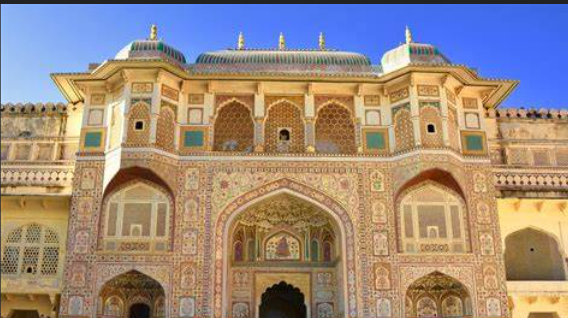
Amer Fort History:
Amber was a state governed by the Meena tribe, specifically under the rule of the Susawat clan. Following the defeat of the Susawats by Kakil Deo, Amber was established as the capital of Dhundhar, succeeding Khoh. Kakil Deo was the progeny of Dulherai.
In its early history, the region now known as Jaipur was referred to as Amber or Dhundhar, under the control of Meena chieftains from five distinct tribes. These tribes were vassals to the Bargurjar Rajput Raja of Deoti. Subsequently, a Kachhwaha prince named Dulha Rai dismantled the Meena authority and vanquished the Bargurjars of Deoli, thereby bringing the entire Dhundhar region under Kachwaha dominion.
The Amber Fort was initially constructed by Raja Man Singh, with significant expansions undertaken by Jai Singh I in the early 1600s. Over the following 150 years, various rulers made further enhancements and additions until the Kachwahas relocated their capital to Jaipur during the reign of Sawai Jai Singh II in 1727.
During the medieval era, Amer was known as Dhundar, a name derived from a term associated with a sacrificial mount in the western frontiers, and was ruled by the Kachwahas from the 11th century onward—specifically from 1037 to 1727 AD—until the capital was transferred from Amer to Jaipur. The history of Amer is inextricably linked to these rulers, who established their empire in this region.
Tickets & Timings:
- Visiting Hours : 8:00 AM – 6:00 PM
Entry Fee (In Indian Rupees): - Indian : Rs. 25.00 Student : 10
Foreigner : Rs. 200.00 Student : 100
Light Shows Timing (Onwords) - In English : 7.30 pm
Entry Fee : Rs. 200.00
In Hindi : 8:00 PM
Entry Fee : Rs. 100.00 - Elephant Ride at Amber Palace for two persons Rs. 900/-
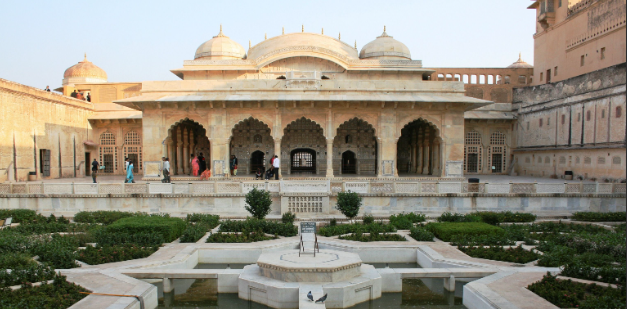
Located:
Amer Fort, also referred to as Amber Fort, is situated in the town of Amer, Rajasthan, India. This town spans an area of 4 square kilometers (1.5 square miles) and is located approximately 11 kilometers (6.8 miles) from Jaipur, the capital city of Rajasthan. Perched atop a hill, Amer Fort serves as the primary tourist destination in Jaipur. The fort is renowned for its artistic architectural features. Its extensive ramparts, numerous gates, and cobbled pathways provide a commanding view of Maota Lake, which serves as the principal water source for the Amer Palace.
Share this content:
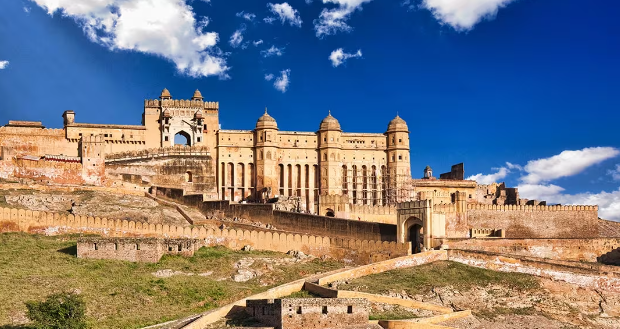
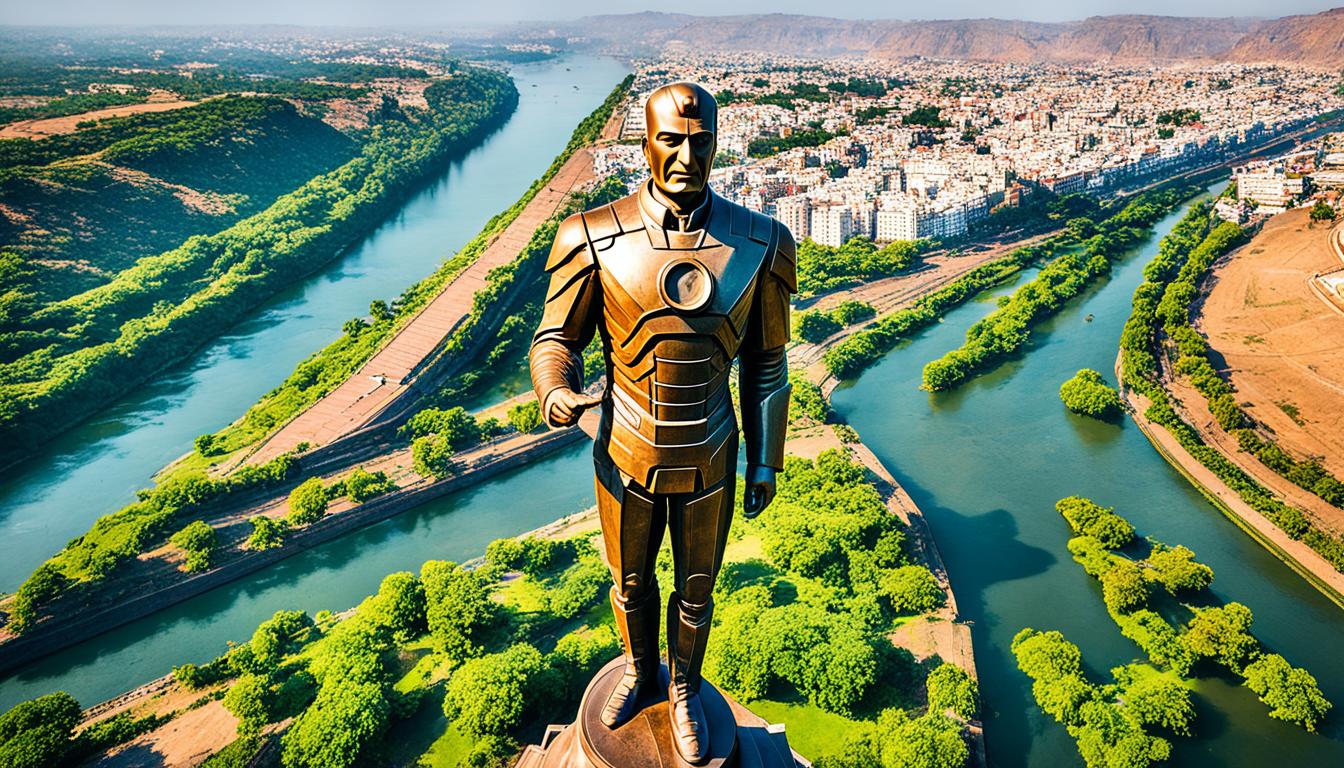
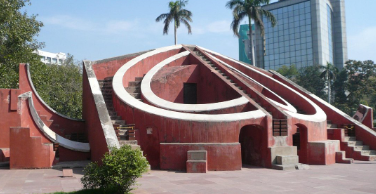











1 comment